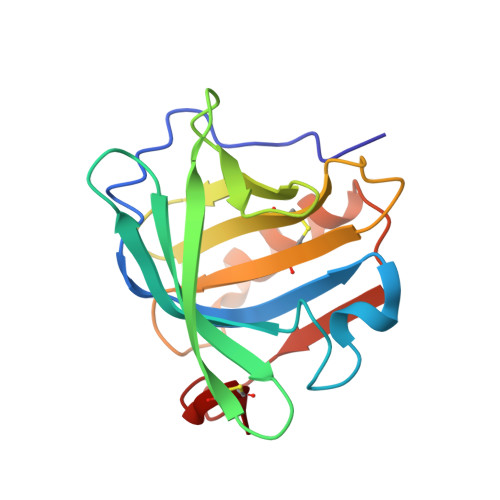Towards understanding the effect of high pressure on food protein allergenicity: beta-lactoglobulin structural studies.
Kurpiewska, K., Biela, A., Loch, J.I., Lipowska, J., Siuda, M., Lewinski, K.(2019) Food Chem 270: 315-321
- PubMed: 30174052
- DOI: https://doi.org/10.1016/j.foodchem.2018.07.104
- Primary Citation of Related Structures:
5LKE, 5LKF - PubMed Abstract:
A number of studies were devoted to understanding an immunological effect of pressure-treated β-lactoglobulin. In our previous work we have proved that high pressure significantly modifies β-lactoglobulin conformation and consequently its physicochemical properties. Here, structure of β-lactoglobulin complex with myristic acid determined at the highest accepted by the crystal pressure value of 550 MPa is reported. Our results structurally prove that pressure noticeably modifies positions of the major β-lactoglobulin epitopes. Considering the biological impact of observed changes in epitope regions, high pressure β-lactoglobulin structure presents a step forward in understanding the pressure modification of food protein allergenicity. The conformational changes of pressurized β-lactoglobulin did not support the hypothesis that proteolytic digestion facilitated by pressure is caused by an exposure of the digestive sites. Our findings demonstrate that high pressure protein crystallography can potentially identify the most pressure-sensitive fragments in allergens, and can therefore support development of hypoallergenic food products.
Organizational Affiliation:
Jagiellonian University, Faculty of Chemistry, Department of Crystal Chemistry and Crystal Physics, Gronostajowa 2, 30-387 Kraków, Poland; Jerzy Haber Institute of Catalysis and Surface Chemistry, Polish Academy of Sciences, Niezapominajek 8, 30-239 Kraków, Poland. Electronic address: [email protected].















